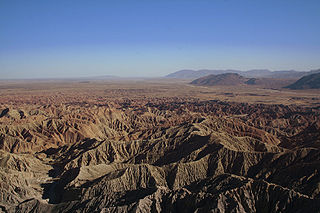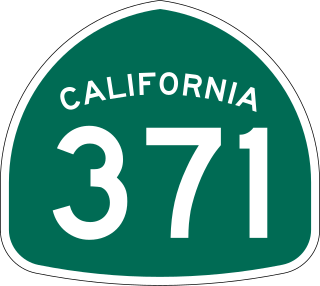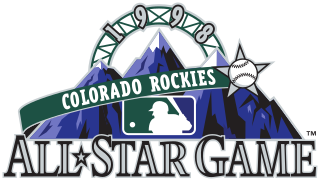
Murrieta is a city in southwestern Riverside County, California, United States. The population of Murrieta was 110,949 as of the 2020 census. Murrieta experienced a 133.7% population increase between 2000 and 2010, making Murrieta one of the fastest-growing cities in the state during that period. Largely residential in character, Murrieta is typically characterized as a bedroom community. Murrieta is bordered by the city of Temecula to the south, the cities of Menifee and Wildomar to the north, and the unincorporated community of French Valley to the east. Murrieta is located in the center of the Los Angeles-San Diego mega-region. Murrieta is named for Juan Murrieta, a Californio ranchero who founded the town.

Highway Patrol is a 156-episode action crime drama series produced for syndication from 1955 to 1959. It was "one of the most popular syndicated series in television history", and it was the first American series broadcast in West Germany on that country's commercial TV channel.

Anza-Borrego Desert State Park is a California State Park located within the Colorado Desert of southern California, United States. The park takes its name from 18th century Spanish explorer Juan Bautista de Anza and borrego, a Spanish word for sheep. With 585,930 acres (237,120 ha) that includes one-fifth of San Diego County, it is the largest state park in California and the second biggest park nationally.

The United States Border Patrol (USBP) is a federal law enforcement agency under the United States Customs and Border Protection (CBP) and is responsible for securing the borders of the United States. According to its web site in 2022, its mission is to "Protect the American people, safeguard our borders, and enhance the nation’s economic prosperity."

The Cahuilla Band of Indians is a federally recognized tribe of Cahuilla people located in Southern California. They were formerly the Cahuilla Band of Cahuilla Indians of the Cahuilla Reservation.
The Agua Caliente Band of Cahuilla Indians of the Agua Caliente Indian Reservation is a federally recognized tribe of the Cahuilla, located in Riverside County, California, United States. The Cahuilla inhabited the Coachella Valley desert and surrounding mountains between 5000 BCE and 500 CE. With the establishment of the reservations, the Cahuilla were officially divided into 10 sovereign nations, including the Agua Caliente Band.

State Route 371 is a state highway in Riverside County, California, serving as a 20.75-mile (33.39 km) connector from SR 79 near Aguanga to SR 74 near Anza. The highway crosses through the private community of Lake Riverside, as well as Cahuilla and the Cahuilla Indian Reservation. It is the primary road running through Anza but mostly serves rural areas.

Anza is a census-designated place located in southwestern Riverside County, California, in the Anza Valley, a semi-arid region at a mean elevation of 3,921 feet (1,195 m) above sea level. It is located 13 miles (21 km) south of Idyllwild, 32 miles (51 km) east-northeast of Temecula, 40 miles (64 km) southwest of Palm Springs, and 90 miles (140 km) northeast of San Diego, being traversed by State Route 371. Anza is on the Pacific Crest Trail. The population was 3,075 at the 2020 census.

Oceanside Transit Center is a major railway interchange in Oceanside, California, serving both intercity and suburban/commuter services. The station is used by Amtrak on the route of its Pacific Surfliner service between San Diego and San Luis Obispo. It is also a terminus for two different regional transit operators – Metrolink, the commuter rail operator for the Los Angeles area, has two of its services, the Orange County Line and Inland Empire–Orange County Line, that terminate at Oceanside, while the North County Transit District, the operator for most of the public transport in the North County, has its COASTER and SPRINTER services also terminating at Oceanside. Oceanside Transit Center is also served by Greyhound Lines, numerous BREEZE buses, and is also the terminal for Riverside Transit Agency's Bus Route 202 to Temecula and Murrieta. COASTER and Metrolink trains going out of service will head to Stuart Mesa but due to the small facility, some Metrolink sets will either be kept at the nearby Fallbrook Yard or stored on an empty track south of the station.

The 1998 Major League Baseball All-Star Game was the 69th playing of the midsummer classic between the all-stars of the American League (AL) and National League (NL), the two leagues comprising Major League Baseball. The game was held on July 7, 1998, at Coors Field in Denver, Colorado, the home of the Colorado Rockies of the National League. The first All-Star contest played in the Mountain Time Zone, the game resulted in the American League defeating the National League 13-8. It remains the highest-scoring All-Star Game in MLB history. Also, it was the last MLB All Star Game not to be held on the 2nd or 3rd Tuesday of July, it was held on the 1st Tuesday of July, and thus the earliest ASG held since then.

United States v. Brignoni-Ponce, 422 U.S. 873 (1975), was the case in which the Supreme Court determined it was a violation of the Fourth Amendment for a roving patrol car to stop a vehicle solely on the basis of the driver appearing to be of Mexican descent. A roving patrol car must have articulable facts that allow for an officer to have a reasonable suspicion that the person is carrying illegal aliens beyond their ethnicity. The Court handed down a 9–0 decision that affirmed the Circuit Court's ruling in the case.

The Black Panther Party was a Marxist–Leninist and black power political organization founded by college students Bobby Seale and Huey P. Newton in October 1966 in Oakland, California. The party was active in the United States between 1966 and 1982, with chapters in many major American cities, including San Francisco, New York City, Chicago, Los Angeles, Seattle, and Philadelphia. They were also active in many prisons and had international chapters in the United Kingdom and Algeria. Upon its inception, the party's core practice was its open carry patrols ("copwatching") designed to challenge the excessive force and misconduct of the Oakland Police Department. From 1969 onward, the party created social programs, including the Free Breakfast for Children Programs, education programs, and community health clinics. The Black Panther Party advocated for class struggle, claiming to represent the proletarian vanguard.

Riverside County is a county located in the southern portion of the U.S. state of California. As of the 2020 census, the population was 2,418,185, making it the fourth-most populous county in California and the 10th-most populous in the United States. The name was derived from the city of Riverside, which is the county seat.

Los Coyotes Band of Cahuilla and Cupeño Indians of the Los Coyotes Reservation is a federally recognized tribe of Cahuilla and Cupeño Indians, who were Mission Indians located in California.
Cahuilla, pronounced, is an unincorporated community in Riverside County, California. It is part of the Cahuilla Reservation and lies in a high desert valley at an elevation of 3642 feet. It is located 27 miles (43.5 km) south by road from mile-high Idyllwild. Cahuilla is on SR 371, about 4 miles (6.4 km) west of Anza, California.

Enrique "Kiki" Camarena Salazar was an American intelligence officer for the Drug Enforcement Administration (DEA). In February 1985 Camarena was kidnapped by drug traffickers hired by Mexican politicians in Guadalajara, Mexico. He was interrogated under torture and murdered. Three leaders of the Guadalajara drug cartel were eventually convicted in Mexico for Camarena's murder. The U.S. investigation into Camarena's murder led to ten more trials in Los Angeles for other Mexican nationals involved in the crime. The case continues to trouble U.S.–Mexican relations, most recently when Rafael Caro Quintero, one of the three convicted traffickers, was released from a Mexican prison in 2013. Caro Quintero again was captured by Mexican forces in July 2022.
The Perris Block is the central block of three major fault-bounded blocks of the northern part of the Peninsular Ranges. The Perris Block lies between the Santa Ana Block to the west and the San Jacinto Block to the east. The Perris Block, was named by Walter A. English in 1925 for the city of Perris, located near the center of the block.
Rupert Costo was a Cahuilla writer, activist, publisher, and philanthropist. He was a co-founder of the American Indian Historical Society (AIHS) and the Indian Historian Press publishing company. Costo had many careers and avocations throughout his life, including farmer, cattle rancher, surveyor, and mineralogist. He also served as an engineer for the California Division of Highways for nearly 20 years.
John Moore is an American photographer. He works for Getty images among others. His work has received several awards, including a Pulitzer Prize in 2005. His photograph of a two-year-old girl, crying as US Border Patrol officers begin to search her mother prior to taking both of them into custody for illegally crossing the US-Mexican border, was named World Press Photo 2018.
Javier Vega Jr. was an agent of the United States Border Patrol who was shot dead by Gustavo Tijerina Sandoval, an illegal alien from Mexico, near Santa Monica, Texas on August 3, 2014. His killer was sentenced to the death penalty, and Vega was honored as the namesake of a street in La Feria, Texas and a Border Patrol checkpoint in Sarita, Texas.














